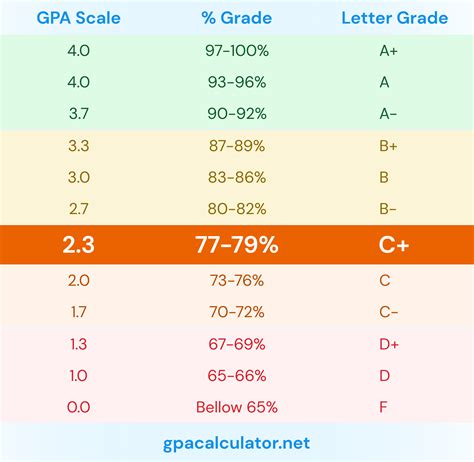Unveiling the Acronym
GPA is an acronym that stands for Grade Point Average. It is a numerical representation of a student’s overall academic performance over a given period of time, typically a semester or academic year.

Importance of GPA
GPA plays a crucial role in a student’s academic journey and beyond:
- Admission to Higher Education: Universities and colleges use GPA as a primary criterion for evaluating applicants’ academic achievements and potential for success in their programs.
- Scholarship and Financial Aid Eligibility: Many scholarships and financial aid programs require applicants to maintain a certain minimum GPA.
- Job Market Competitiveness: Employers often consider GPA as an indicator of academic skills and work ethic when hiring.
- Personal Growth and Motivation: Tracking GPA can provide students with a tangible measure of their progress and motivate them to strive for academic excellence.
Calculating GPA
GPA is calculated by dividing the total number of quality points earned by the total number of credit hours attempted. Quality points are assigned to each grade based on a predefined scale, typically:
| Grade | Quality Points |
|---|---|
| A | 4.0 |
| B | 3.0 |
| C | 2.0 |
| D | 1.0 |
| F | 0.0 |
For example, a student who takes 12 credit hours with grades of 3 As (12 quality points), 4 Bs (12 quality points), and 6 Cs (12 quality points) would have a GPA of 3.0 (36 quality points divided by 12 credit hours).
Types of GPAs
There are different types of GPAs that serve specific purposes:
- Cumulative GPA: Calculates the average GPA across all courses taken during a student’s academic career.
- Major GPA: Calculates the average GPA in courses related to a student’s major field of study.
- Term GPA: Calculates the average GPA for a specific semester or academic year.
- Weighted GPA: Considers the difficulty level of courses when calculating GPA, assigning higher weight to more challenging courses.
Strategies for Improving GPA
Enhancing GPA requires a proactive approach:
- Set Realistic Goals: Establish specific GPA targets and work towards them consistently.
- Manage Time Effectively: Create a study schedule and stick to it, allocating sufficient time for coursework and assignments.
- Seek Help When Needed: Don’t hesitate to ask for assistance from professors, peers, or tutoring services if you encounter difficulties.
- Utilize Study Techniques: Implement effective study methods, such as active recall, spaced repetition, and concept mapping, to improve retention and comprehension.
- Engage in Class: Participate actively in lectures and discussions, and ask clarifying questions when necessary.
Common Mistakes to Avoid
Some common pitfalls to avoid during your GPA journey include:
- Procrastination: Delaying assignments and studying can lead to rushed work and lower grades.
- Lack of Organization: Failing to organize lectures, notes, and assignments can result in confusion and missed deadlines.
- Skipping Classes: Regular attendance is crucial for understanding course material and participating in class discussions.
- Overcommitting: Taking on too many courses or activities can spread you thin and affect your academic performance.
- Underestimating the Difficulty of Courses: Not recognizing the challenge level of a course can lead to inadequate preparation and lower grades.
Comparative Analysis: Traditional vs. Weighted GPA
Traditional GPA
- Ignores course difficulty
- May not accurately reflect academic potential
- Can be inflated by taking easier courses
Weighted GPA
- Considers course difficulty
- May provide a truer representation of academic ability
- Can be more competitive for college admissions
Applications of GPA Beyond Grades
While GPA is primarily used to measure academic performance, it can also be applied creatively to other domains:
- Student Performance Index: A comprehensive assessment of a student’s academic, behavioral, and attendance records using GPA as a key indicator.
- Faculty Evaluation: As a metric to assess faculty effectiveness in teaching and engaging students, based on their students’ GPA performance.
- Program Evaluation: To evaluate the efficacy of educational programs and identify areas for improvement by analyzing students’ GPAs.
Tables for Reference
Table 1: GPA Scale
| Grade | Quality Points |
|---|---|
| A | 4.0 |
| A- | 3.7 |
| B+ | 3.3 |
| B | 3.0 |
| B- | 2.7 |
| C+ | 2.3 |
| C | 2.0 |
| C- | 1.7 |
| D+ | 1.3 |
| D | 1.0 |
| F | 0.0 |
Table 2: GPA Calculation Example
| Course | Credits | Grade | Quality Points |
|---|---|---|---|
| English | 3 | A | 12 |
| Math | 4 | B | 12 |
| History | 5 | C | 10 |
| Science | 6 | B+ | 19.8 |
| Total | 18 | 53.8 |
GPA = 53.8 (total quality points) / 18 (total credit hours) = 2.99 ≈ 3.0
Table 3: GPA Types and Purposes
| GPA Type | Purpose |
|---|---|
| Cumulative GPA | Overall academic performance |
| Major GPA | Performance in major-related courses |
| Term GPA | Performance in a specific semester/year |
| Weighted GPA | Performance considering course difficulty |
Table 4: Strategies for Improving GPA
| Strategy | Description |
|---|---|
| Set Realistic Goals | Establish achievable GPA targets |
| Manage Time Effectively | Create and adhere to a study schedule |
| Seek Help When Needed | Reach out to professors, peers, or tutoring services |
| Utilize Study Techniques | Implement active recall, spaced repetition, etc. |
| Engage in Class | Participate in lectures, discussions, and ask questions |
